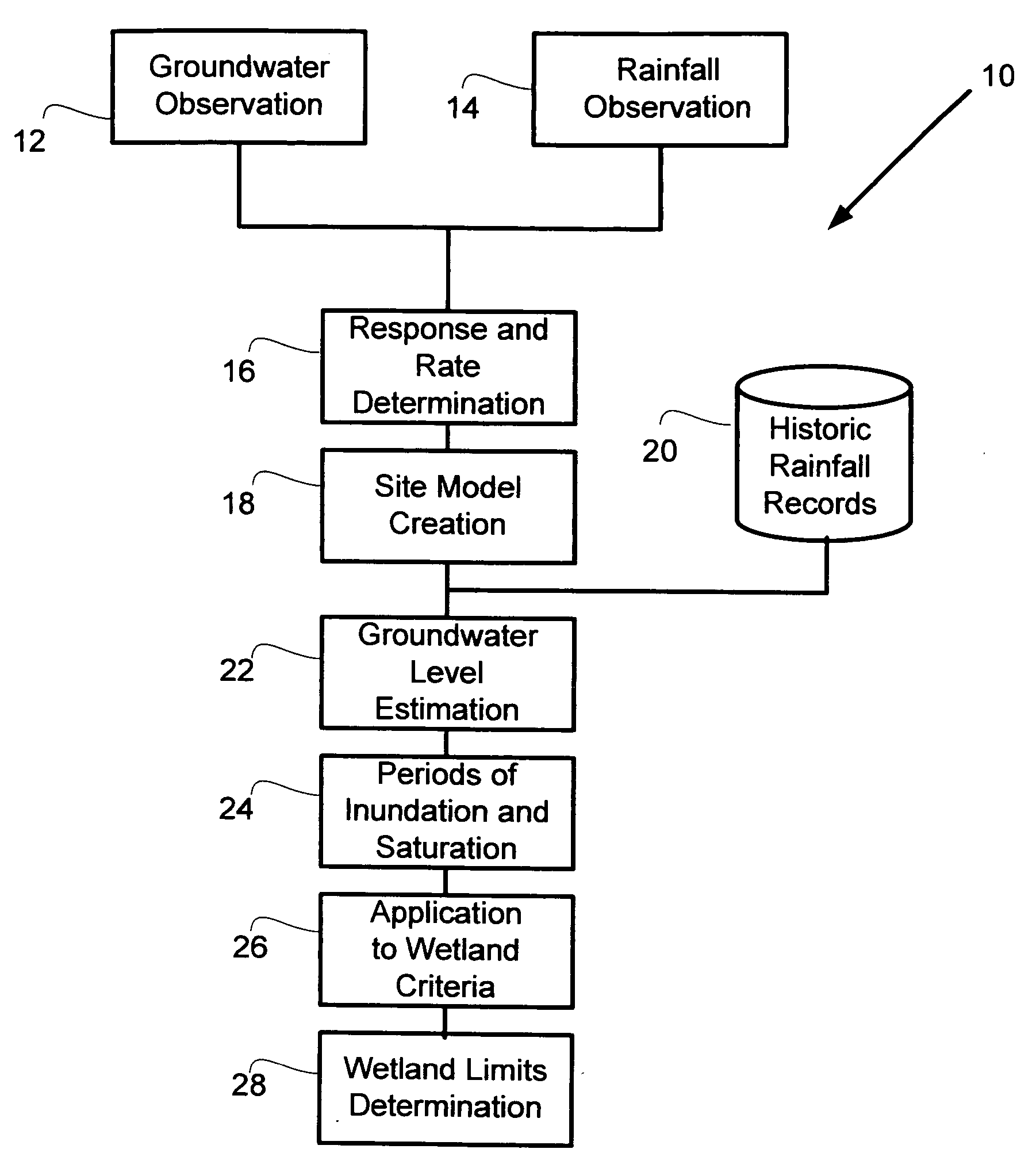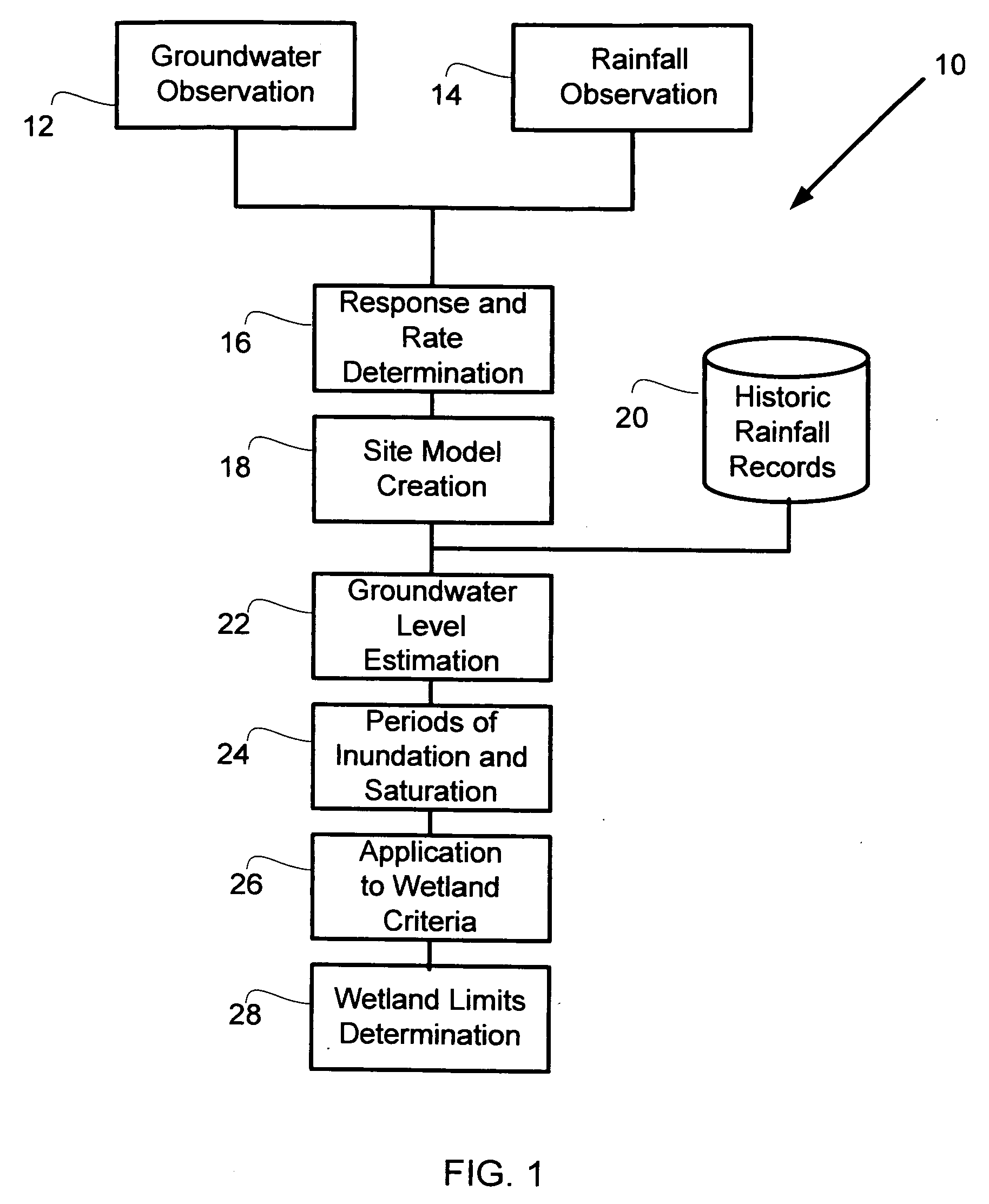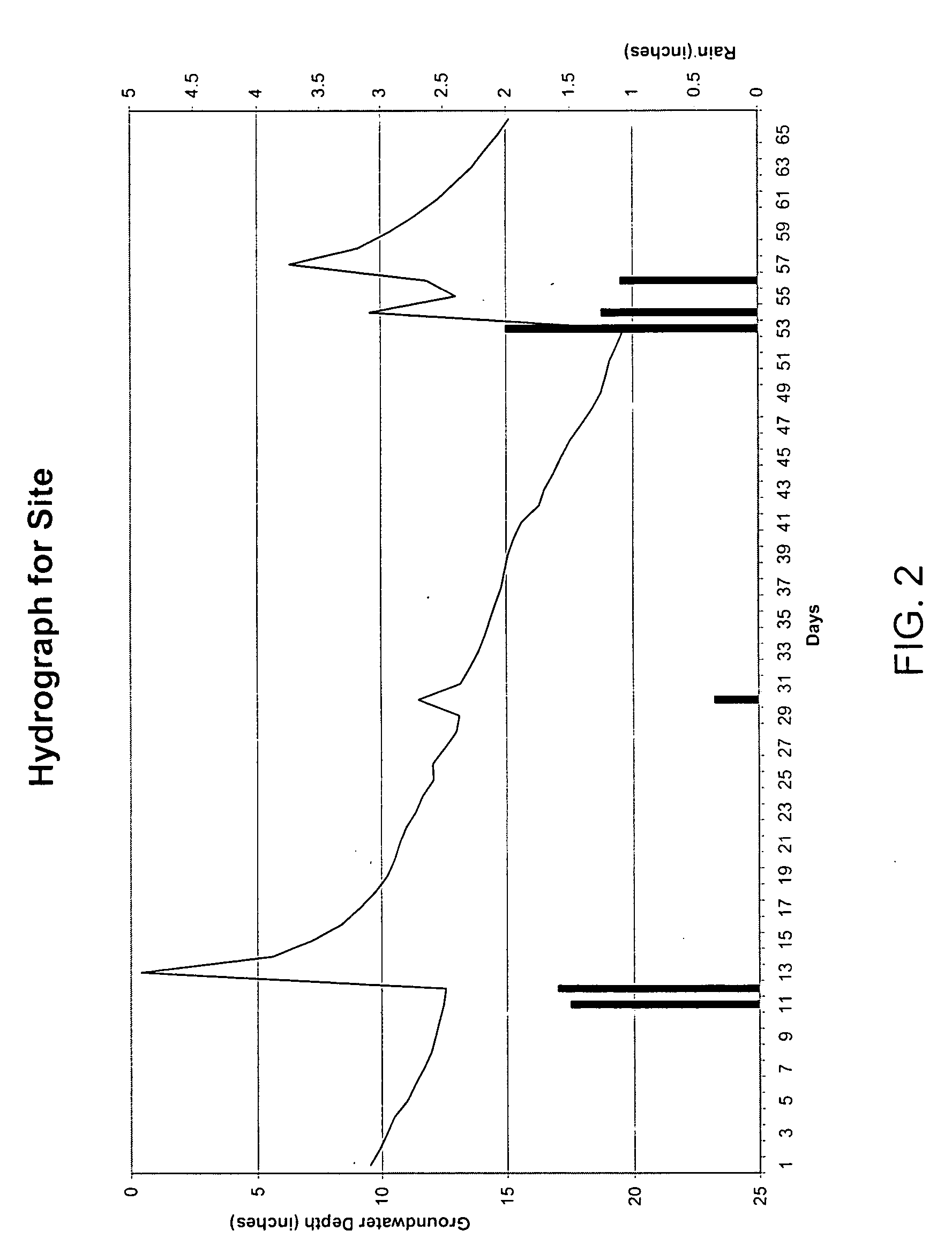Methodology for prediction of shallow groundwater levels
a shallow groundwater and methodological technology, applied in liquid/fluent solid measurement, instruments, machines/engines, etc., can solve the problems of prolonged and bitter disputes over the interpretation of vegetative and soil evidence, ineffective traditional methodologies for precisely defining the boundaries of wetlands,
- Summary
- Abstract
- Description
- Claims
- Application Information
AI Technical Summary
Problems solved by technology
Method used
Image
Examples
Embodiment Construction
[0021] An overview of a method for prediction of shallow groundwater level fluctuation for wetland determination is illustrated in FIG. 1. The process initially involves rainfall response and infiliration rate determination 16 utilizing on-site groundwater observation 12 and rainfall observation 14 for a particular region. Groundwater observation 12 and rainfall observation 14 are data acquisition steps. Various techniques are known in the art for this type of data acquisition. Commonly used techniques include manual depth readings in shallow wells, manual reading gauges, and the use of automated sensors. The purpose of these steps is to collect information about how groundwater levels are affected by rainfall for a particular site. Whatever method is used, it is desirable for the user to track the groundwater level and rainfall quantities over time for the site. In order to create a more accurate model, observations should be made with a minimum duration covering several rainfall e...
PUM
 Login to View More
Login to View More Abstract
Description
Claims
Application Information
 Login to View More
Login to View More - R&D
- Intellectual Property
- Life Sciences
- Materials
- Tech Scout
- Unparalleled Data Quality
- Higher Quality Content
- 60% Fewer Hallucinations
Browse by: Latest US Patents, China's latest patents, Technical Efficacy Thesaurus, Application Domain, Technology Topic, Popular Technical Reports.
© 2025 PatSnap. All rights reserved.Legal|Privacy policy|Modern Slavery Act Transparency Statement|Sitemap|About US| Contact US: help@patsnap.com



